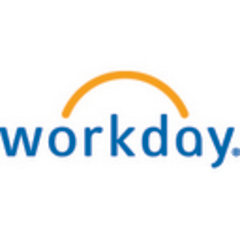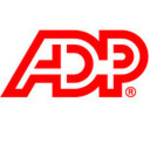What is our primary use case?
Workday provides a number of offerings. I've seen it primarily being used for human capital management, which includes onboarding, the entire employee lifecycles from recruiting to offboarding, payroll, benefits, absence, and time tracking.
Unlike some of its competitors such as PeopleSoft, Oracle, or SAP, Workday is cloud-based. Workday is built natively in the cloud, and you're always on the most recent version.
In terms of the cloud provider, they do have their own data centers. They've got one in Portland. They've got one in North Carolina, one in Dublin, Ireland, and maybe one or two at other places. I have heard that ultimately the underlying technology is AWS, but I'm not certain of that.
Technically, it's a hybrid model. Their enterprise bus model is such that technically you share server resources with other customers. A lot of customers don't actually know that, but if we're all running a lot of integrations or doing a lot of data processing at once, it's possible that the server could be impacted, and whoever is providing the maintenance would have to then throttle and pull resources from somewhere else. However, most customers don't experience any type of real performance issues, and then from a security standpoint, even though they're shared server resources, everything is of course constrained to just that particular customer. No other customer could view a separate customer's data or things of that nature.
How has it helped my organization?
Based on the corporations I've worked for and I've consulted with, it surprised me how immature at times they are with their people processes. There is such a focus on scaling the revenue-generating arm of the business that oftentimes, the operations are somewhat neglected. Workday creates a framework where you can scale the operations of the business to support what's going to drive revenue. It creates operational efficiencies.
What is most valuable?
There is a lot to like about it. I really enjoy the business process framework. It's something that's really seamless. It allows you to have people within the flow. They get assigned a task to complete something to approve, etc. That's a really good piece of functionality that Workday offers. Their out-of-the-box reporting framework is also really powerful in terms of what it provides. These would be two things that I would highlight.
What needs improvement?
Workday does have a community site where people can go on and off for suggestions. They call them Brainstorms, and you can vote them up. That is something that they do well, but oftentimes, they seem to be racing to deliver something based on what a competitor is delivering. For example, if they hear SAP has this new functionality and learning that's going to be coming out, they prioritize there, which makes sense, but unfortunately, some of these Brainstorms may get neglected where the product might not be improved as quickly or as needed for the customers. You might be waiting for a year or two to get a feature that you'd like released. They should pay more attention to customer feedback and ensure that customer feedback is an essential part of their product roadmap.
Buyer's Guide
Workday
March 2025
Learn what your peers think about Workday. Get advice and tips from experienced pros sharing their opinions. Updated: March 2025.
861,803 professionals have used our research since 2012.
For how long have I used the solution?
I've been using Workday for about eight years.
What do I think about the stability of the solution?
Its stability is really strong. It is reliable.
What do I think about the scalability of the solution?
With respect to scalability, Workday does quite well. It has a lot of packaged integrations. It has a lot of in-house offerings. It allows an organization to scale.
We have over 10,000 employees. We've got a variety of direct hires. We've got contractors, and we've got interns. We've got people in the States, Canada, various countries in Europe, India, China, and Australia. With respect to roles, most people in the organization aren't going to interact with Workday outside of their unique profile. It's going to be for things like requesting time off, checking pay stubs, or reviewing benefit documentation. By and large, they're rarely in the application. People who are using it day in and day out are going to be recruiters and potentially managers approving time offs and maybe issuing compensation changes if they're on a hiring team, and they're approving some type of award or things of that nature. Then, there are super users, which includes people like me who are on the technical side doing integrations, supporting, or configuring the native Workday functionality.
It is being used extensively in our organization. Workday is part of our long-term operational technology stack and plans. I definitely see that we'll continue to adopt it, and we'll continue to look at the ways we can extract value from it.
How are customer service and support?
Overall, they do well. I'd rate them an eight out of ten.
Which solution did I use previously and why did I switch?
I've used some competitor tools. Another tool in the space that tends to be more for small and medium enterprises is Kronos. That's the one where I cut my teeth initially. I switched to Workday because it was a job opportunity. I had taken a position and learned the technology, and that has been more or less my focus or bread and butter for the last eight years. My current company had already rolled out the technology to some extent, and when I was hired, we rolled out additional functionalities.
How was the initial setup?
It is highly complex, and the level of complexity depends on what functionality you're rolling out. If you're rolling out payroll and converting from a legacy system, that's going to be complex. All in all, Workday does a good job to help you be successful, but nevertheless, it's still complex.
It definitely takes months. A lot depends on the size of the organization. Workday has started to market towards smaller customers or organizations with under 500 employees, which is unique and something new for their business model. Typically, that wasn't their bread and butter. It has always been the medium enterprises or large enterprises. Their sales pitch is that they can stand those customers in 16 weeks. That generally tends to be more in the neighborhood of 20 weeks. If you're a big customer with over 5,000 employees or in the neighborhood of even 50,000 employees, it's not unreasonable that your deployment could take a year or more. Even with Oracle, SAP, or PeopleSoft, your deployment is going to be the same. There's just no way you're going to roll out all the change management and all that technology in a short amount of time. It just wouldn't be feasible.
What about the implementation team?
You get the option to do it in-house, use a third party, or use Workday to help you out with the implementation. All three are available. In my experience, I've been a consultant and have gone through implementations with customers. I've also been a customer and gone through the implementation and leading that. Workday, of course, is very much involved in trying to ensure the success of the overall deployment.
The maintenance and the deployment of the solution are a part of my role. Maintenance is an area in which Workday is really strong because it is native to the cloud, and they keep all their customers on the same version. Workday goes through two big releases every year, and it also has weekly releases, which include just fixes and small features. The cool thing there is you're taking credit for new features being released, but you may not have been the one who was patching the server and things of that nature. That's a really strong suit of Workday.
What's my experience with pricing, setup cost, and licensing?
By and large, Workday is expensive. It is based on the headcount. I'd probably rate it a three or four out of five in terms of pricing. It'd be like buying a Mercedes or a high-end car. It's expensive, but there's a specific value that you're getting with additional features and things of that nature. Using that metaphor, Workday probably tends to be more of a luxury. There are others like ADP that can do your payroll, your time off, and other things, but they don't do it as well.
It is based on the headcount, and it is based on the number of modules you license. HCM is a module. Payroll is another module, and Benefits is also a module. Each module you choose is going to be an additional cost. In addition, you're also going to have costs associated with test environments. Workday, by default, is going to give you production and a sandbox environment with your license. They're also going to give you a preview environment of what's being released, but if you want additional test environments, there is a license cost.
What other advice do I have?
You would require a really good partner. You would also require in-house expertise, specifically within the technology itself. You need to be able to go out and attract and bring in the talent to help you be successful. You need to understand that doing it really well is going to require more of an investment than what you're hearing in the sales. If you've got 2,000 employees, Workday may say that you could support this entire application with two or three people, but just in my experience, if you have a lot of modules licensed, it's probably not realistic. You're probably not going to extract the full value. You need to understand whether you are okay with not getting everything out of what you're paying for. If so, that's fine, but if you really want to get the bang for your buck, it's going to require an investment.
You also need to understand that it's going to take time to implement. So, you need to manage expectations and understand what are other priorities in the organization and what the fiscal year looks like. Is it a standard calendar? If you're going through something that's going to impact financials, you're probably not going to want to roll out something really heavy on January 1st. You would want to have that in place prior to that.
Workday also has a financial piece that they offer in their technology stack that competes against Oracle. We don't currently use that, but it is a good piece of technology. They also have a learning management system that integrates directly with the other pieces of data.
Workday's model and what they really preach is this idea of the Power of One. So, they try to get everything within one environment. The sales pitch is that it is going to then reduce the number of other vendors or applications that you would have to have and integrate with, which holds true in some cases. It might not hold true in other cases depending on the needs of the business, budget, internal expertise, and things of that nature. It's just an overarching model that you see in tech where a lot of IT departments want to license the best in class and scale from there.
I'd rate it a nine out of ten. Overall, it delivers a really seamless solution that allows for operational efficiencies and operational excellence.
Which deployment model are you using for this solution?
Public Cloud
If public cloud, private cloud, or hybrid cloud, which cloud provider do you use?
Other
Disclosure: My company does not have a business relationship with this vendor other than being a customer.


















